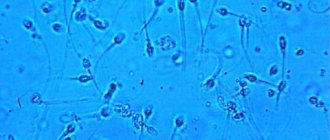Bladder cancer is a manifestation of a tumor on the mucous surface of the organ. Due to the specificity of the structure, bladder cancer begins to develop in men much more often than in women. The most dangerous age when cancer can develop is from 45 to 50 years.
Treatment of bladder cancer in men is determined by many nuances. It is necessary to identify the causes that increase the chance of developing the disease and the stage to which oncology has developed.
In a situation where a man suspects that he has cancer, it is necessary to undergo tests for special diagnostics. The first symptoms should not be ignored, because bladder cancer develops more often in men, and if the disease is ignored, the chances of successful treatment decrease greatly.
An ultrasound photo or a cytoscopy photo may also be required for diagnosis.
What is a bladder tumor?
The bladder is part of the urinary system. It is a hollow muscular organ designed to store urine, which is produced in the kidneys and enters through the ureters. The organ can expand while it is filled with urine and contract after emptying due to the elastic muscle wall.
The bladder acts as a urine reservoir
The bladder wall consists of 3 layers:
- The urothelium lining the inner surface of the bladder, ureters and urethra. It consists of urothelial (transitional) cells and is also called transitional epithelium.
- Connective tissue, or subepithelial, separating the urothelium from the outer layer of muscle. Contains blood vessels, nerves and glands.
- The muscular layer is the outer layer of the bladder. The muscularis propria consists of three layers of smooth muscle tissue: inner longitudinal, middle circular and outer longitudinal.
The bladder wall consists of three layers: urothelium, connective tissue and muscle
How does a neoplasm arise?
Tumors are pathological formations that arise as a result of disruption of the mechanisms of cell division, growth and formation. The process of turning normal cells into tumor cells is called tumorigenesis. In this case, the tumor can be either benign or malignant, depending on its structural characteristics and the potential to spread to other tissues and organs (the ability to metastasize).
When normal cells undergo degenerative changes (mutations), leading to their abnormal, uncontrolled growth and reproduction, a tumor occurs
Neoplasms formed by degenerated cells that can reproduce but are not able to metastasize are called benign tumors. They usually do not pose a threat to life. They are removed surgically and usually do not recur.
Tumors whose cells are able to penetrate through the blood or lymph into distant parts of the body are malignant (cancerous, oncological). Cancer can have a detrimental effect on both adjacent tissue and any distant organs. The penetration of malignant cells through the lymphatic system or bloodstream into other tissues and organs and the formation of metastatic lesions in them with subsequent destruction of these organs is the hallmark of a malignant tumor.
The term "cancer" refers to the tissue in which it originates. For example, bladder cancer is a different disease from lung cancer. If a bladder cancer cell metastasizes, that is, spreads to the lungs through the bloodstream, the tumor is considered metastatic bladder cancer rather than lung cancer.
The exact cause of tumors is unknown, and there is currently no effective way to prevent their formation.
Description of the disease
Urinary cancer is an oncological pathology. With it, a malignant tumor develops on the wall of the bladder, inside the cavity. Women are 4 times less susceptible to this disease than men. The type of disease depends on which cells have transformed into malignant ones. More specifically:
- Carcinoma or cancer of the transitional cell category. This is the most common form.
- Squamous cell cancer. The main cause is cystitis, which most often develops in women.
- The most common type is adenocarcinoma.
There is also a classification depending on the form of growth - invasive and non-invasive. In the first case, cancerous tissue grows to the wall of the bladder and cellular structures in the vicinity. The second option is that the tumor, in the process of growth and development, extends beyond the bladder.
Types of bladder tumors
The bladder is susceptible to the development of the following types of tumor-like formations that are benign in nature:
- papillomas are warty formations growing from the urothelium of the bladder into its cavity; occasionally papillomas simultaneously appear in other places of the urinary tract;
- inverted papillomas - also develop from the urothelium, but the surface of this type of tumor is smooth, and its growth is directed towards the wall of the bladder;
- leiomyomas - formed in the muscle layer of the bladder tissue;
- fibromas - formed from coarse fibrous connective tissue;
- hemangiomas - grow from choroid plexuses in the wall of the bladder;
- neurofibromas - originate from the membranes of nerve cells in the bladder;
- Lipomas - originate from the fat cells that surround the bladder.
Among all the types of cells that form the bladder, it is the cells of the inner surface of the organ that are most susceptible to malignant degeneration.
Any type of cell is capable of pathological mutation. The names of cancers correspond to the types of cells from which they originate:
- Urothelial carcinoma. Occurs in 9 out of 10 cases of bladder cancer. This type of pathology develops from transitional cells that form the urothelium. Hence its second name - transitional cell carcinoma. Similar cells line the inner surface of the ureters, therefore, there is a danger of the tumor spreading through the ureters to the kidneys.
- Squamous cell carcinoma. This type of squamous epithelial cell tumor is much less common, occurring in about 8% of cases. Neoplasms consist of squamous epithelial cells and occur after a long-term inflammatory process or irritation of the bladder, lasting for months or years.
- Adenocarcinoma. The most rare species, its prevalence is approximately 2%. Adenocarcinoma is formed from secretory cells of the glands. Therefore, it is also called glandular cancer.
Diagnosing a tumor at an early stage is the key to successful recovery
Based on the depth of tumor penetration into the bladder wall, cancerous tumors are divided into superficial and invasive . Almost all adenocarcinomas and squamous cell carcinomas are classified as invasive. Therefore, by the time they are detected, they usually have already invaded the thickness of the wall. Most urothelial carcinomas do not grow beyond the mucosa and are noninvasive.
The depth of invasion (implementation) allows us to assess the degree of aggressiveness of the tumor and its potential danger
Bladder cancer is most common in industrialized countries.
To prescribe adequate treatment, the doctor needs to know the extent of the cancer. Its determination is based on a microscopic assessment of the tumor. Cells of a highly malignant neoplasm have more changes in structure when examined microscopically. These tumors are more dangerous and tend to spread aggressively, even if they are not invasive at first glance.
Causes of tumor development
The exact reasons for the transformation of healthy cells into tumor cells are unknown. It is believed that there is a connection with changes in DNA - the macromolecule that forms genes and controls the functioning of cells. These changes can activate certain oncogenes, which tell cells to grow, overdivide and survive. Genetic changes can be inherited from parents or acquired as a result of certain risk factors.
Men are three times more likely than women to suffer from bladder cancer. But female tumors tend to be more aggressive.
It has been established that the following factors negatively affect the health of the bladder, provoking a tumor process:
- Smoking tobacco. Smokers get sick 3-5 times more often than people who do not have this bad habit.
- Professional activities related to chemicals. Regular exposure of the body to chemical agents increases the likelihood of developing a neoplasm. Hazardous industries include: paint and varnish, textile and printing industries, rubber and leather processing, hair coloring.
- Food preferences. A diet with excess amounts of fried meat and animal fats is believed by doctors to increase the risk of bladder cancer. The same goes for not drinking enough fluids, especially water.
- Medications. According to the US Food and Drug Administration, use of pioglitazone for the treatment of diabetes for more than one year increases the likelihood of developing tumorigenesis in the urinary tract. The same applies to preliminary chemotherapy with Cyclophosphamide (Cytoxan).
- Radiation therapy of adjacent organs. Radiation for oncology of the pelvic organs (uterus, prostate, rectum) sometimes provokes tumor growth in the bladder.
- Arsenic in drinking water. Various arsenic compounds, accumulating in excess in the body, inhibit the ability of cells to restore damaged DNA molecules, and as a result, lead to disorders in genes.
These are factors that a person can influence. You can stop smoking, use chemical protection at work, or change your diet.
The following risk factors are those that are beyond human control:
- Age - the older a person is, the greater the likelihood of developing oncogenesis.
- Gender - men are statistically more at risk.
- Race - the white race leads in the number of bladder cancers.
- A history of a malignant tumor of the urinary tract means that the risk of recurrent disease is higher in those who have had a similar cancer in the past.
- Chronic cystitis - repeated infections, the presence of stones, constant use of a urinary catheter (Foley) and other factors that irritate the bladder increase the risk of developing a malignant tumor, most often squamous cell carcinoma.
Chronic cystitis (inflammation of the inner lining of the bladder) can lead to tumor formation over time - Birth defects - The urachus is the connection between the umbilical cord and the bladder in the fetus, it usually disappears before birth, but if part of the connection remains, it can degenerate into adenocarcinoma of the urachus.
- Genetics and heredity - people whose immediate family has experienced bladder cancer also have an increased risk of developing this malignant tumor.
Video: cancer you can catch
Causes and risk factors
When bladder cancer is diagnosed, a natural question arises as to what could have caused the disease. However, doctors cannot always explain why cancer affects some patients and bypasses others, but it is known that patients with certain risk factors are at greater risk of developing bladder cancer.
Risk factors are characteristics, conditions, or behaviors that increase the risk of a particular disease.
Research has shown that risk factors for developing urinary tract cancer include:
- Smoking . Tobacco smoke is a major risk factor for developing bladder cancer; in fact, cigarette smoke causes the majority of cancer cases. Those who smoke for many years are at greater risk than those who do not smoke or those who only smoke for a short period of time.
- Chemical substances . Some patients are at greater risk of developing bladder cancer because they are exposed to certain chemicals at work. People working in the chemical industry (paints, rubber), metallurgy, textile and leather industries are most at risk of getting sick. Others at high risk include: hairdressers, train drivers, printers, painters and truck drivers.
- Antitumor therapy . Anyone who has had cancer in the past and has been treated with certain drugs, such as cyclophosphamide, may be at greater risk of developing bladder cancer. Even those who have had radiation therapy to the abdomen or pelvis may be at risk.
- Arsenic . Arsenic is a toxic substance that increases the risk of developing bladder cancer. In some areas of the world, arsenic can be present in large quantities in running water, but in many countries laws limit the maximum amount present in drinking water.
- Previous family history of bladder cancer . Those with a family history of bladder carcinoma are at greatest risk of developing the disease.
- Personal history of bladder cancer . Those who have already suffered from the disease are at greater risk of getting it again.
However, many people with cancer may not have any of the risk factors listed above; conversely, many patients with one or more risk factors may not develop the disease.
Symptoms of neoplasms
Most small benign tumors are asymptomatic, although larger ones may compress surrounding structures and cause symptoms.
The most common symptoms of a malignant bladder tumor are:
- blood in the urine (hematuria);
Visible hematuria (blood in the urine) is one of the main symptoms of a malignant bladder tumor - pain or burning during urination without signs of a urinary tract infection;
- Changes in urinary habits, such as needing to urinate more often with a low flow and small volume of urine.
These symptoms are nonspecific. This means that they can be associated with many other conditions that have nothing to do with cancer.
Blood in the urine is usually the first warning sign of bladder cancer. But a similar symptom can be caused by a number of benign medical problems, such as:
- urinary tract infection;
- urolithiasis disease;
- benign formations.
Bladder cancer can occur at any age, but it is most common in people over fifty years of age.
Unfortunately, blood is often invisible to the naked eye and can only be detected under a microscope during laboratory analysis. This is called microscopic hematuria. Visible blood in the urine is called gross, or macroscopic, hematuria. The urine may have a slight pink or orange tint, but it can also be bright red with or without blood clots. If there is any suspicious change in the color of urine, you should immediately consult a doctor. Bladder cancer often causes no symptoms until it reaches an advanced stage that is difficult to treat.
Main reasons for development
Oncology of the genitourinary system should never be considered an ailment that is easily treatable, regardless of the current stage. Any degree, even a mild one, requires close attention. This is an abnormal phenomenon that is important to prevent before it affects nearby tissues and systems of the human body.
This disease is dangerous for every person, regardless of gender. After all, the bladder for each of us performs the same function, the accumulation and removal of vital processes through the urethra.
At this period of life, no specialist can yet give an exact answer as to what are the main causes of the disease, however, there are still some assumptions:
- The development of cancer in women is associated with a genetic predisposition due to trisomy (triplication) of the seventh chromosome.
- Diseases caused by long-term infectious processes in the female genitourinary system. For example, in case of cystitis, urolithiasis, which caused stagnation.
- The risk of cancer may increase if a woman lives for a long period in areas with high radiation.
- Swimming in polluted waters increases the risk of schistosome infection. This is a parasitic worm that can infect the body of any person in a matter of minutes while swimming in water bodies.
- The risk may be caused by foods rich in proteins and table salt. This has not yet been proven, but the fact remains. Therefore, women who want to lose weight should not overuse protein-based cocktails and also eat plenty of protein-rich foods.
- Smoking. This harmful habit must be abandoned, because it affects not only the condition of the lungs, but also entails the development of cancer in the urinary system and the entire woman’s body due to the influence of nicotine.
In addition to all of the above, women should also avoid professions that involve working in hazardous industries with chemicals and paints.
Diagnostic methods
Diagnosis of bladder cancer usually begins with a visit to a general practitioner, who, based on the results of a general examination, refers to a urologist. The doctor will ask the patient about symptoms, recent medical procedures, and risk factors.
Physical examination includes:
- Bimanual examination. It is carried out wearing medical gloves. The doctor inserts the fingers of one hand into the vagina (woman) or rectum (man), and places the second hand in the lower abdomen, pressing lightly on it. By palpating the organs with both hands at the same time, the doctor can detect a tumor or lump in the wall of the bladder.
- Palpation of the abdomen for tumors and signs of liver enlargement.
- Assessment of the size of regional lymph nodes.
For a complete examination of the bladder, as well as to check the general state of health for the purpose of further treatment planning, the following studies are prescribed:
- General urine analysis. Essential for identifying abnormalities in color, appearance, and levels of electrolytes, hormones, and metabolic waste products. For example, the presence of red blood cells indicates bleeding in the urinary tract.
- Bacteriological urine analysis. Testing is done to rule out infection as the cause of urinary symptoms. This is a 1-3 day process of growing microorganisms from a urine sample in a specially prepared medium. Bacterial culture is used to determine the presence of pathogens in the urine. Normally they are not there.
- Urine cytology. Microscopic examination of urothelial cells for possible abnormalities. Cells for cytology are isolated from a normal urine sample, or the urologist flushes the bladder with saline during a cystoscopy to collect the material.
- General blood analysis. Measures the quantity and quality of white blood cells, red blood cells and platelets. Essential to test for anemia from long-term or chronic bladder bleeding.
- Computed tomography (CT). X-ray method of layer-by-layer examination of organ tissue. Allows you to create three-dimensional and cross-sectional images of organs and tissues. It is also used to determine the stage of a cancerous tumor (there are 4 in total).
- Cystoscopy. A therapeutic and diagnostic procedure for examining the bladder through an endoscope inserted into the urethra - a thin tubular instrument with a light and a lens. Allows you to visually assess the size, location and structure of any abnormalities in the bladder, and, if necessary, perform therapeutic manipulations.
Cystoscopy - examination of the inner surface of the bladder - Fluorescent cystoscopy is a procedure that uses a dye (porphyrin) and a special light to help identify cancer cells more easily. Porphyrins are a group of chemicals that glow in the blue light spectrum. The doctor injects porphyrin into the bladder, and the cancer cells absorb it. Then, using a cystoscope, the doctor examines the bladder.
- Biopsy. If symptoms, laboratory tests, and screening images indicate a malignant process, the next step is a biopsy—excision of a small sample of tumor tissue for laboratory testing for the presence of malignant cells. Using a biopsy, the depth of invasion is assessed. Today, only this method makes it possible to make a final diagnosis. More than 5% of biopsies, according to studies, can cause complications. These include pain, bleeding, infection, and accidental injury to a nearby organ. But the biggest danger of biopsies is the risk of metastasis. Puncture of the tumor can cause microscopic amounts of cancer cells to be released into the surrounding lymphatic system or blood vessels, allowing them to travel to distant organs. This does not mean, of course, that everyone who undergoes a biopsy will experience these complications. But the presence of such a connection must be taken into account when prescribing this procedure to patients.
- Tests for tumor markers. Typically used to monitor the progress of cancer treatment. But they can be used to diagnose bladder cancer. Tumor markers are substances (usually proteins) in the urine that may indicate the presence of bladder cancer.
Diagnostics
The leading link in diagnosis and diagnosis is the determination of tumor markers during a general urinalysis, however, to accurately confirm the diagnosis, ultrasound, cytoscopy and magnetic resonance imaging are necessary.
- When determining TAM, it is of great diagnostic value to determine not only gross hematuria, but also the tumor marker NMP22 - this is a nuclear matrix protein, one of the most accurate markers of tumor growth in this disease.
- Ultrasound diagnostics – allows you to confirm the presence of a neoplasm in the tissues of the bladder. And also establish localization in the body, bottom or neck of the organ.
- MRI – allows you to determine the exact structure, location and degree of invasiveness of the tumor.
- Cytoscopy – internal visual examination of the bladder cavity using an endoscopic device – a cystoscope. Allows you to exclude a number of diseases with similar symptoms and determine the exact location of the malignant tumor.
When performing cystoscopy, you can take a piece of biopsy for a histological examination of the structure of the tumor.
Photo of the tumor obtained using cystoscopy
Treatment of bladder tumor
When the malignant nature of the tumor is confirmed, the urologist-oncologist develops an individual treatment plan, which may consist of a combination of various methods. When choosing the type of therapy, the doctor takes into account:
- type of tumor;
- location of the tumor;
- stage of the disease (tumor size, degree of invasion, presence of metastases);
- general health.
Standard therapy for invasive bladder cancer includes:
- surgical removal;
- immunotherapy;
- chemotherapy;
- radiation therapy.
For early-stage non-invasive tumors, local treatment called intravesical therapy is usually selected. Immunotherapy is a local method and involves treatment delivered inside the bladder. Surgery and radiation therapy get rid of cancer cells only in the treated area. Chemotherapy is systemic and can kill tumor cells almost anywhere in the body.
Asymptomatic benign bladder tumors usually do not require treatment. Patients are shown dynamic monitoring with regular cystoscopy and ultrasound. If such a tumor grows and puts pressure on surrounding tissues, it is removed surgically.
Any type of cancer is much more successfully treated if it is detected at an early stage.
Surgical
Malignant bladder tumors usually require surgical removal. The doctor determines the required type of operation based on the type of tumor and the stage of the oncological process. One of the following methods may be used:
- Transurethral resection (TUR). Most often used to remove tumors that are localized on the mucous membrane, without having time to penetrate into the wall. The procedure involves inserting a small wire loop through the urethra, which destroys cancer cells using an electrical current (fulguration). After the procedure, you may experience soreness or bloody urination.
Transurethral resection is a urological surgical technique for removing bladder tumors - Partial or segmental cystectomy. Excision of the part of the bladder containing cancer cells without damaging the function of the organ. If the malignant tumor is localized in a specific area of the bladder, then segmental cystectomy is a suitable treatment option.
- Radical cystectomy. Removal of the entire organ along with regional lymph nodes. If necessary, some reproductive organs may also be removed. After cystectomy, the surgeon creates new urine drainage pathways, usually by installing a urostomy - an external urine storage device. Plastic surgery can also be performed to form an artificial bladder from a section of the ileum.
An artificial bladder is formed from a section of the ileum
Medication
Medicines may be used to control the growth of cancer cells and relieve symptoms. Medicines are given intravenously or directly into the bladder using a catheter.
Immunotherapy
Immunotherapy is a type of biological therapy that works through the immune system to destroy cancer cells. This technique uses natural or artificial substances that mimic the behavior or block the reactions of natural cells to destroy, control or change the behavior of cancer cells.
The most commonly used immunotherapy is the Bacillus Calmette-Guérin (BCG) vaccine, which is traditionally used to prevent tuberculosis but, according to new research, can stimulate the body's own capabilities to fight malignant tumors. BCG is administered intravesically (through a catheter).
Immunotherapy is mainly indicated for the treatment of non-invasive tumors. But it may also be offered for locally advanced or metastatic tumors as second-line therapy if the tumor continues to grow during or immediately after treatment with Cisplatin, and if the tumor recurs within 12 months. A drug used for immunotherapy for advanced (advanced) cancer is called Pembrolizumab (Keytruda).
Keytruda is an antitumor drug
Chemotherapy
Intravesical or systemic chemotherapy is also used to treat bladder cancer. During intravesical chemotherapy, drugs are injected into the bladder through a catheter. This technique may be prescribed instead of BCG or if the bladder tumor does not respond to the vaccine. A recognized drug for intravesical chemotherapy is the antitumor antibiotic Mitomycin. Its use reduces the risk of recurrence (recurrence) of superficial tumors that have not grown into the muscle layer of the bladder wall.
Mitomycin - antitumor antibiotic
During systemic chemotherapy, drugs are administered intravenously and circulate throughout the body. Systemic chemotherapy is needed to treat tumors that have spread to other tissues near the bladder (locally advanced cancer) or to other parts of the body (metastatic cancer). Chemotherapy is recommended before radical cystectomy (called neoadjuvant chemotherapy) in many cases if the tumor has invaded the muscle layer of the bladder wall. Systemic chemotherapy is also often given after radical cystectomy (called adjuvant chemotherapy) for people with particularly dangerous tumors that have spread to the lymph nodes.
Radiation therapy
Radiation therapy, or radiotherapy, is treatment by exposure to ionizing radiation. Radiation therapy can be delivered from a device outside the body (external beam radiation therapy) or from a device placed directly inside the body near or close to the cancer. In women, the device is placed in the vagina (brachytherapy).
External beam radiation therapy is most commonly used to treat bladder cancer. The technique can be used as the main one in situations where the tumor cannot be completely removed or to prevent postoperative relapse. It is also intended to relieve symptoms caused by an advanced tumor (palliative radiotherapy). This method can be used before surgery to shrink a tumor so it can be easily removed, or after surgery to kill remaining cancer cells.
Radiation therapy, or radiotherapy, is the treatment of a tumor by exposure to ionizing radiation
Radiation therapy and chemotherapy are sometimes used as a combination treatment.
Diet food
Food choices can affect bladder health. Reasonable dietary changes can greatly improve organ function. You just need to follow a few simple recommendations:
- consume enough fluid;
For bladder health, it is extremely important to drink enough clean water per day. - avoid bladder irritants;
- Maintain regular bowel movements.
Bladder irritation is caused by any food, drink, or substance that causes symptoms such as a frequent and urgent need to urinate or leakage of urine.
Common bladder irritants include:
- Foods and drinks containing citric acid. Many fruits and some vegetables irritate the bladder due to their high acid content. Tomatoes, lemons, limes, oranges, grapefruit and pineapples are the most acidic of them. You should also avoid fruit juices, which usually have added sugar and preservatives. Low-acid fruits include watermelon, papaya, pears and apricots.
- Meat products. Meat and meat products are an excellent source of protein, but they are also a source of acid. All meat contains purines. The product of their breakdown is uric acid. It is necessary for the body; the kidneys are responsible for its control and elimination. But excess uric acid can lead to urolithiasis, gastrointestinal disorders and bladder irritation.
- Alcohol. Can negatively affect the bladder in several ways. First, alcohol is a powerful diuretic, which causes the bladder to overstretch. Secondly, alcohol has a direct irritant effect on the mucous membrane of the bladder. Finally, many alcoholic drinks combine alcohol with other bladder irritants, such as fruit juice and carbonated liquids. You can reduce the negative impact on the bladder by diluting alcohol with water in a 1:1 ratio.
- Coffee and tea. These drinks are major bladder irritants due to their caffeine content. It affects the body in ways similar to alcohol. The diuretic effect results in increased urine production, while the acidic nature of these drinks can cause direct irritation to the bladder. Herbal teas and coffee substitutes can be good alternatives to caffeinated drinks. The effects of caffeine can be mitigated by diluting drinks with water or another alkalizing agent.
- Artificial sweeteners and preservatives. Many food preservatives are also bladder irritants. Benzoic acid, used in many fruit juices and sodas, is often combined with citric acid to improve flavor. Sulfites or sulfur dioxide are also acidic in nature and are used in wines, fruit and vegetable products to preserve color and flavor. Most nutritionists recommend using natural sweeteners such as stevia instead of artificial ones.
Photo gallery: foods that irritate the bladder
Excess purines and uric acid are a direct result of excessive consumption of meat products.
Alcohol has a direct irritant effect on the urinary tract
Caffeine-containing drinks should be avoided if you have bladder problems.
Preservatives and sweeteners are harmful not only to the urinary tract, but also to the body as a whole.
Tomatoes contain a lot of acid that irritates the bladder
Video: methods of treating a malignant tumor of the bladder
Surgical treatment of cancer
Surgical treatment of cancer is the main and most effective method, which has been successfully used in medicine for quite a long time. Contraindications include tumor growth, metastases, and diseases that do not allow anesthesia.
The operation is carried out in several ways:
- Transurethral. A cystoscope is used, which is inserted through the urethral canal. The tumor is removed partially, in segments or completely.
- Radical cystectomy. Along with cancerous tumors, other organs, such as the prostate gland and seminiferous tubules, can also be removed. When the tumor has grown sufficiently, the bladder may be removed. In men, as a method of treating cancer, this operation is performed quite often. To further store and drain urine, surgeons create an artificial bladder.
After surgery, courses of chemotherapy are often prescribed to eliminate any remaining cancer cells.
Surgical treatment of cancer is quite effective if performed in the early stages of the disease. When the disease is advanced, surgery is no longer prescribed. Therefore, it is important to monitor any changes in your body.
Treatment prognosis and complications
The prognosis for patients with a benign tumor is usually excellent in the vast majority of cases. The danger is that such formations can degenerate into malignant ones over time. Of all types of malignant tumors, bladder cancer has an unusually high tendency to recur after initial treatment, whether it consists of local excision alone or excision by transurethral resection. Cancer treated in this way has a recurrence rate of 50 to 80%.
Recurrent cancer is usually, but not always, the same type as the primary one. It may recur in the bladder or in another part of the urinary tract (kidneys or ureters).
The prognosis of a malignant tumor varies greatly among patients depending on the stage of the cancer and the degree of invasion. Almost 90% of patients treated for noninvasive bladder cancer survive for at least five years. The average survival time for patients with metastatic tumor is 12 to 18 months. Recurrent tumors indicate a more aggressive type and a worse prognosis for long-term survival. Recurrent low-grade superficial bladder cancer is rarely life-threatening if treatment is not neglected.
Treatment
A radical method is to carry out combined treatment using several courses of polychemotherapy with cytostatic drugs and surgical intervention.
Surgical treatment consists of resection of either part of the bladder or its complete removal. The non-invasive form can be removed in situ using TUR - transurethral resection.
The invasive form is removed by open surgery with resection of the affected part of the bladder, or its complete removal. The scope of the operation necessarily includes lymph node dissection - removal of the pelvic lymph nodes to reduce the risk of relapse.
After surgery, the patient is prescribed several courses of maintenance chemotherapy.
Is it possible to prevent bladder tumors?
Since the exact causes of tumor development in the bladder are unknown, there is no reliable way to prevent tumors, either benign or malignant. But you can always take steps to reduce the risks. Such measures include:
- To give up smoking. Quitting smoking is key to reducing the risk of recurrence, especially for superficial bladder cancer.
- Providing the necessary protection when working with chemicals.
- Compliance with the drinking regime in accordance with the needs dictated by age and climatic conditions. Drinking enough fluids dilutes and flushes toxic and carcinogenic substances from the body before they can cause damage.
Bladder tumors can be malignant or benign. It is impossible to distinguish one from the other without a full medical diagnosis. The earlier a cancerous tumor is detected, the higher the patient’s chance of a favorable outcome. This is why it is important to seek medical help when the first suspicious symptoms appear.
Diagnosis of bladder cancer in women
The examination may include the following studies and tests:
- Cytological analysis of urine for bladder cancer in women helps identify tumor cells.
- Cystoscopy is an endoscopic examination during which a special instrument with a video camera, a cystoscope and the mucous membrane is examined.
- A biopsy may be performed during cystoscopy. The doctor removes a fragment of pathologically altered tissue and sends it to the laboratory for cytological, histological, and molecular genetic research.
- CT and MRI help to assess the size, location, number of lesions, and check whether the tumor tissue has spread to neighboring organs.
- PET scanning is used to look for metastases. A radiopharmaceutical is injected into the body and accumulates in tumor cells. Thanks to it, metastases are contrasted in photographs taken using a special device.
- Ultrasound is most often used to assess the condition of the kidneys and ureters.











